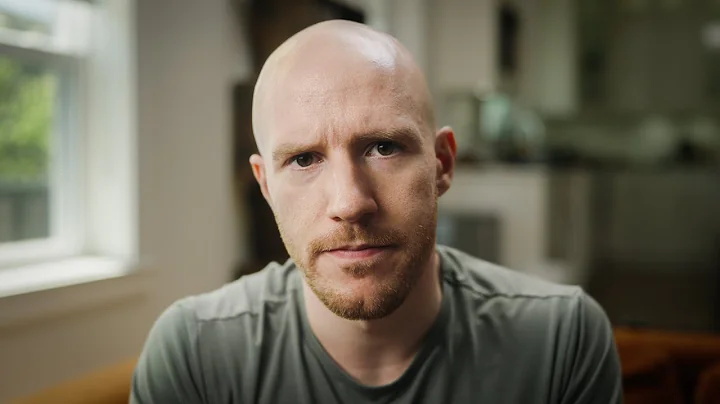text/Yiming
On August 15, 1945, Japanese Emperor announced on a broadcast of the whole Japan that it would accept the "Perstan Announcement" and implement unconditional surrender!
However, more than 70 years have passed, and now many people are still kept in the dark. After Japan was defeated that year, it had already launched the "cultural invasion" and "mixed-blood invasion" plans. and, in a subtle way, influenced and covered the fourth and fifth generations of people in China!

▲ What is "cultural invasion"
From a child born in 1970 to today's post-00s and post-10s, they basically grew up watching Japanese cartoons. Don’t you think this is something worthy of being vigilant? Why can Japanese anime be popular in China for decades and influence several generations of Chinese people?
And what does these "two invasions" mean? Besides Japanese comics, what other aspects are there?
Let's continue to look down.

1
At the end of 1980, Iron Arm Astro Bou was premiered in the country. You may not know yet that this is the first Japanese anime introduced by China. It triggered a ratings craze as soon as it was played, and such a popular cartoon was actually given to domestic TV stations for free in Japan!
However, after the anime is played, a Japanese brand commercial advertisement must be played. As expected, there will be no free lunch in the world, and there are many routines behind it.

Although this matter seems to be a Sino-Japanese business cooperation on the surface, the essence behind it is still cultural invasion.
First of all, after Japanese anime quickly entered the Chinese market, children from the 1980s who could see TV basically grew up watching Japanese anime. At the same time, it took the opportunity to open the overseas door of Japanese goods.

Until later, in the 1990s, there were slam dunks and football players, and the 2000s had One Piece and Naruto, which even influenced the current 10s.
(even if you don’t take the initiative to watch it, you will be more or less affected by classmates and friends, so you can passively see some Japanese comics)
From this point of view, Japanese cartoons have basically covered four or five generations of China. If keeps letting him continue to develop, isn’t this a thing worthy of being wary of? Why is only Japanese cartoons popular in China for decades? Is this really accidental?

The answer is obviously not accidental, but full of routines.
You should know that as more and more children are growing up in China, they will naturally feel good about Japan and become curious, and they will only increase but not decrease. It even leads to weakening children's historical concepts, thus turning curiosity and favoritism into yearning, and when they grow up, they go to Japan to create value for it!
This is a typical cultural invasion and cultural conquest. This penetration of will not appear immediately, but is more of a layout and preparation for future needs.

Just on July 20, a little boy in Guangzhou, Guangdong cut a haircut by himself, and actually shaves a traditional Japanese hairstyle, which is "Moon Leader".
This is also the result of being influenced by Japanese comics, which is very different from the aesthetics of China over the past 5,000 years. Do you think this hairstyle is really good? Does it fit the identity of a primary school student?

▲ Where is the "cultural invasion" in Japan "successful"?
In fact, the Sino-Japanese War is still continuing, but it has changed its form, a cultural war without gunpowder.
And the Japanese cultural strategy is not only supported by animation. You should know that Japan was a defeated country in , in World War II, and was occupied by the United States after the war, but most of the Japanese were not convinced.

At that time, Japan was choked by the United States in military terms. In terms of economy, even if it made too much money, others might not necessarily have a good impression of themselves. Finally, it was discovered that conquering the world from culture is something that others could not refuse.
, especially some capable and powerful elites, are very unwilling to accept it, and do not want Japan to be simply the large-scale military base of the United States, .
Therefore, the proposal of the "cultural country" strategy has become Japan's basic national policy.

Then in 1996, Japan clearly proposed the 21st century cultural country strategy, which clearly pointed out that Japan should be built into a major cultural export country.
In 2003, the strategy of building a country was proposed.
In 2007, the development strategy of cultural industry was proposed.

And these development strategies in Japan are not just talk about them. In fact, Japan's cultural invasion has long penetrated into all aspects of life.
At present, in addition to the English that must be learned in class, Japanese is ranked second in the popular foreign languages in China. According to relevant information, more than 500,000 candidates across the country will choose Japanese in the 2022 college entrance examination.
But most students did not choose Japanese because of their future career planning . They just liked it simply and then took the initiative to learn Japanese.

Later, a star went to Yasukuni Shrine to check in; several war criminal tablets suddenly appeared in the temple; Japanese-style streets with a strong fantasy; and some Chinese people with weak historical concepts swanked the market in kimonos, and even the naming methods of cultural activities in many places have changed from a certain cultural festival to a summer festival .
I really didn’t expect that in just one year, such exposures emerged one after another.
Isn’t this a thing worthy of being wary of?

▲ "Mixed-Blood Invasion" plan
"Mixed-Blood Invasion" is also a type of "cultural invasion", and the harm brought by the "Mixed-Blood Invasion" plan is even more terrifying, and can even reach the point of "destroying the country"!
In Japan's cultural war for more than 60 years, the island country Palau is the most successful case of Japan's "mixed-blood invasion".

Palau land area is 459 square kilometers. In 1885, the island occupied by the Spanish , but this island is too small and Spain did not take it seriously. It was sold to Germany.
During the Imperial War , Japan occupied the island.

But Japan did not enslave the original inhabitants of the island like Spain and Germany.
instead transferred a large amount of manpower and material resources from Japan to start building Palau and building hospitals and schools on the island. Teach the Palau people to speak Japanese and instill Japanese cultural ideas into them. even moved Japan's domestic system and laws to Palau, planning to assimilate Palau. The scene of
is exactly the same as the assimilation method after Japan occupied the Northeast.

Back then, Japan ruled through the puppet Manchukuo regime in the northeast of my country and used various means to carry out assimilation propaganda, hoping to achieve Japan-Manchu assimilation in Northeast my country and make the Northeast an extension space for Japanese territory.
But in the face of the powerful Chinese civilization, Japan's plan failed.
but very successful in Palau.

After decades of unremitting efforts in Japan, almost all the people of Palau have Japanese bloodlines, and even the first president after independence is also Japanese.
People learn Japanese culture, speak Japanese, eat Japanese food, and even change the national flag to a Japanese style. It can be said that this country has been completely assimilated by Japan!

However, in Palau people have long forgotten history, and have forgotten the burning, killing, looting, rape of women, doing everything they want, and many crimes that were angered by God during the Japanese invasion.
. After Japan surrendered to , all the countries that had been occupied by Japan hated them to the core. , but it is also a country that has been "defeated" by Japan. Why is the only island country Palau very grateful for Japan's invasion?

Finally, under the influence of Japanese culture for decades, the Palau people regarded the locals as saviors. And they are full of gratitude for it, and these Palau people also recognize themselves as Japanese from the bottom of their hearts.
This is the most successful "hybrid invasion" plan!
▲ Japanese cultural infiltration is becoming more and more intense
Today, Japan is still continuing its own "global hybrid" plan. mainly appears in the form of overseas investment, quietly doing cultural brainwashing.

They usually invest in companies and build factories in target countries, and then build Japanese schools under the pretext of facilitating children's studies!
In order to attract foreign investment, some countries agreed. Through this method, Japan has established complete Japanese schools in Southeast Asia.
For example, in Vietnam , Japan will first carry out Japanese teaching for primary school students in Vietnam through official cooperation. The same is true in , Mongolia, , Thailand.

In these Japanese schools, all students are Japanese, all the faculty and staff are Japanese, and even the cleaners and chefs are Japanese. In such a highly independent area, even the local education department has no right to supervise and review it.
trains students, on the one hand, strictly learn Japanese culture and ensure that they do not forget their roots. On the one hand, we work hard to learn local culture and facilitate integration into the local area.

Because these students can directly choose to work locally after graduation, or study, and finally intermarry with locals. Through marriage, the culture and thoughts of his partner, and even a new generation of children, then he entered Japanese schools to study, repeating...
, and children after intermarriage were influenced by Japanese culture since childhood, and they were very aware of Japan, and even developed the identity of Chinese.
Thinking of this, it is really terrifying to think about it carefully.

At present, there are 35 Japanese schools in China. The largest Japanese school in East Asia is in Shanghai.
And Japanese schools do not allow any Chinese to get close, including taking photos, interviews, surveys, etc.
▲ resists cultural invasion, and it is urgent to wait for
This kind of high independence is difficult to convince people. is really hard to imagine what they are doing in this "dark" space. It is even more impossible to imagine that these Japanese children grow up working, living, intermarrying in China, and then infiltrating into national high-level enterprises, and even spying on important military, technological and other intelligence.

In fact, the war is still continuing, but it has become a cultural war without gunpowder.
In the past, foreign funds were urgently needed for development, and it was understandable that Japan could build Japanese schools. But now the international situation is different. We must be vigilant and keep the alarm bell ringing!

At present, Japanese cultural invasion is urgent, and we also call on everyone that we should limit the output of Japanese cultural products in China to a certain extent, at least reduce the impact of Japanese culture on Chinese children, and eliminate Japanese cultural invasion.



![On Writing: Subtext (and how to use it)! [ Tarantino | Thrones | Gatsby ] - DayDayNews](https://i.ytimg.com/vi/58FyvzttlIg/hq720.jpg?sqp=-oaymwEcCNAFEJQDSFXyq4qpAw4IARUAAIhCGAFwAcABBg==&rs=AOn4CLBfOGnWnraSxYimgs9dAYyEcjATVg)







